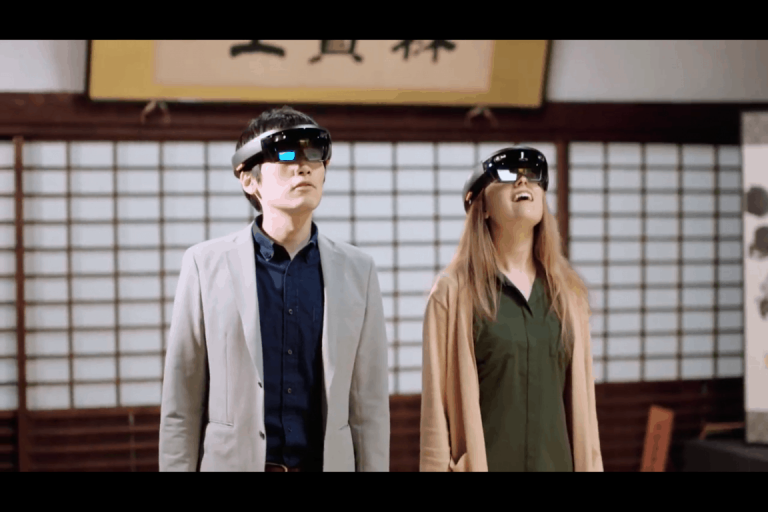You’d be forgiven if you thought Microsoft’s flagship AR device had been shelved over the past few months as the company has seemingly gone underground in its efforts to promote its utility and relevancy.
However, it seems the HoloLens team is doing a bit reflection before it presents its evolved vision for augmented reality as a post surfaces on the Microsoft blog detailing just how HoloLens version one came to into the AR zeitgeist.
It was classified as top secret
The HoloLens team discusses the secrecy that surrounded not only the production of the device but even the job listing as Microsoft sought the right engineers, designers, managers, and visionaries to create what might be the company’s next computing platform.
“The most difficult mechanical problem you will ever work on and it’s going to be similar to inventing and creating antigravity boots” is how it was described to Roy Riccomini, the first mechanical product designer hired for the project.
What exactly were they making?
While the imagery of creating antigravity boots has its cloak-n-dagger appeal, the reality of what the HoloLens team was actually tasked with was much more thought-provoking and ultimately more nuanced.
HoloLens is an immensely complicated product. Specialized components—multiple sensors, advanced optics, and a custom holographic processing unit—all work together to birth a hologram with no external cameras, no wires, no phone, and no connection to a PC needed.
It took the some of the greatest minds in Silicon Valley and around the world to create a head-mounted, cordless PC capable of projecting digital images in an augmented fashion. The hiring manager had to fill the team with individuals not only skilled with vertical integration, production scaling, manufacturing, physics, design and a myriad of other positions, but each person had to be an expert at their given talent.
“There is a lot of talent that we can find in Silicon Valley itself, being a hub for a lot of technological research, work, and talent. A large part of the system design team is from Silicon Valley—due to the talent pool available here,” said Nagina Bhandary, director for system validation on HoloLens. “Plus, we have other hardware teams, like the Silicon team here, and it makes it very easy to collaborate.”
HoloLens senior leadership makes a point to highlight the culture that was created and nurtured during the development of the device and how it helped individuals grow their skill set while achieving AR milestones in the industry.
“There’s a lot of investigation, trial, and error, and we encourage people to take those risks for experimentation.”
Now, with three years of public awareness and two years of developer feedback, the HoloLens team can safely pat themselves on the back for a job well done. The vision of HoloLens is no longer an expensive garage project, but actually making a difference in lives of people today.
Japan Airlines uses HoloLens for portions of its jet-engine repair trainee programs. Automotive car maker Volvo uses Microsoft’s AR solution to display modifications in 3D model make ups. The success stories of HoloLens continue to increase as more people find niche uses for the technology and its potential shaping the way we visualize computing and communication in the future.
For more details on what exactly went into the development of Holoens, visit the Microsoft blog, here.




